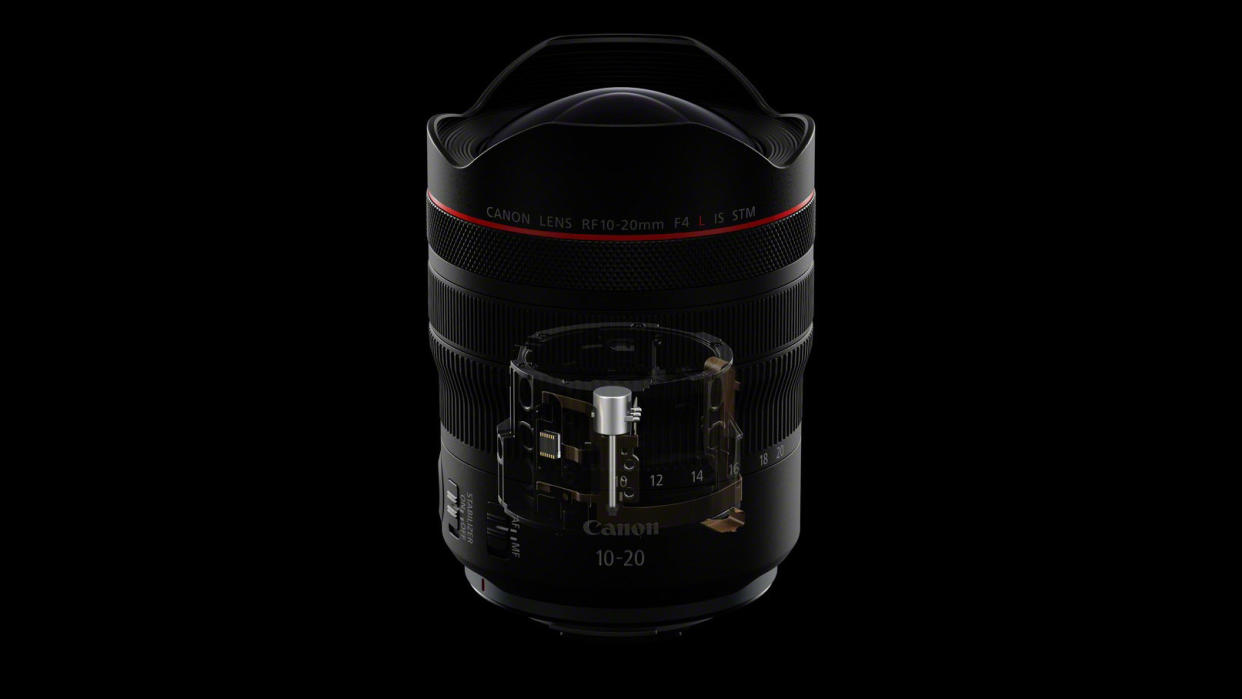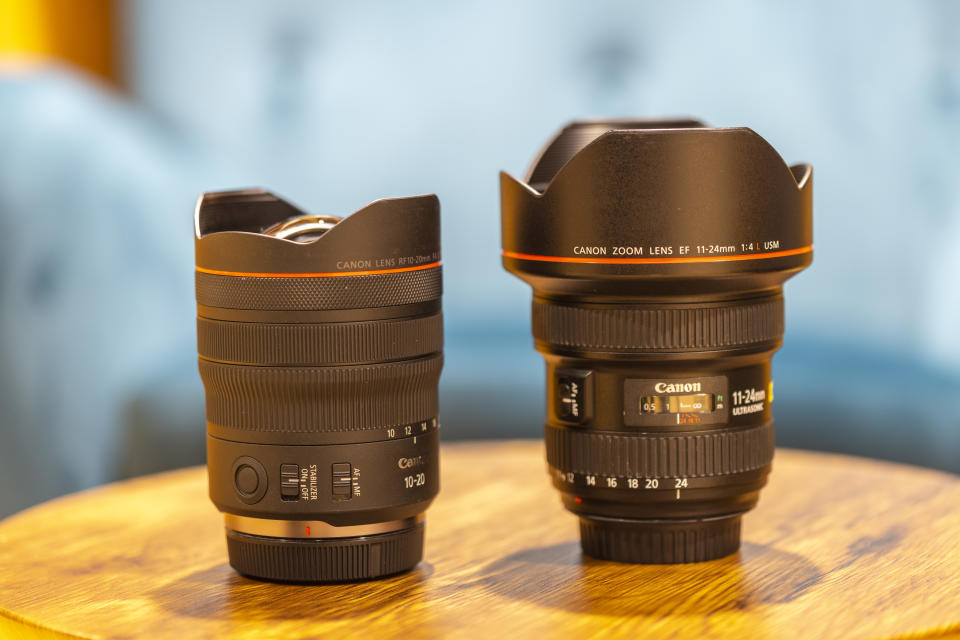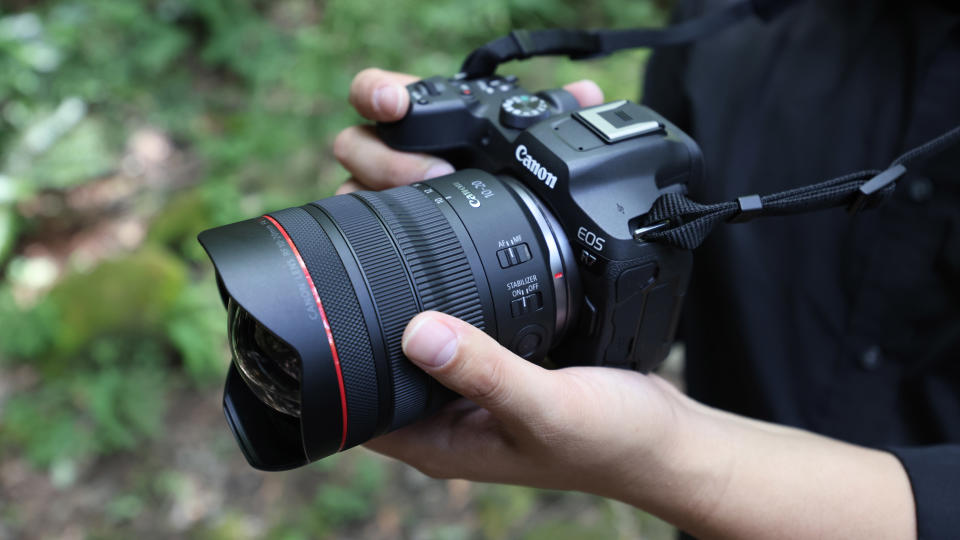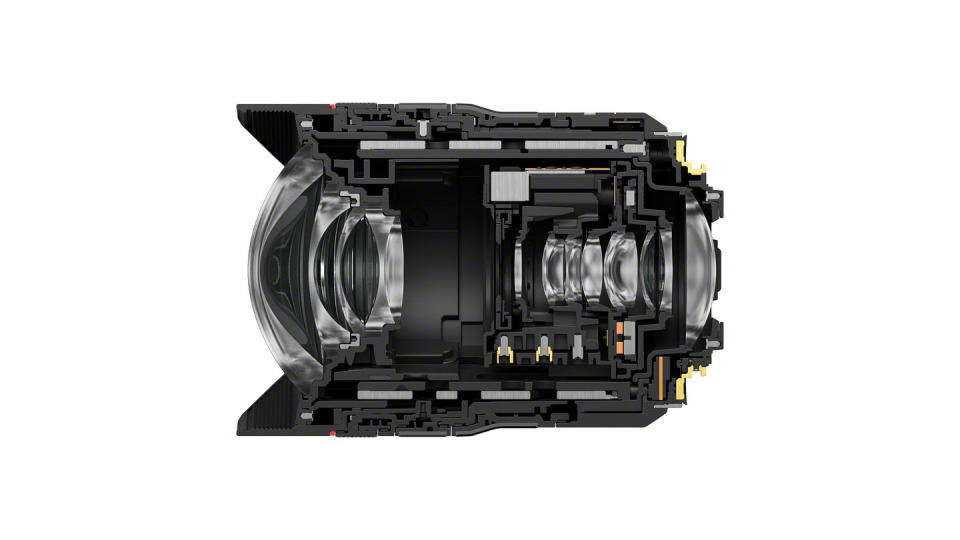Secrets behind Canon's ground-breaking RF 10-20mm lens revealed in new interview

In a recent interview with Japanese Digital Camera Magazine editorial department, Canon’s top engineers sat down and revealed some eye-opening insight that went on behind the scenes to create company’s record-breaking Canon RF10-20mm F4 L IS STM lens, which built on its predecessor in every conceivable way and raised the bar once again for full-frame mirrorless optics.
Launched back in October 11 2023, Canon’s RF 10-20mm F4L IS STM set the record as the world’s widest full-frame rectilinear lens with autofocus – and boasted new peripheral Image Stabilization tech, too. Lighter, smaller, sharper, more feature-dense and more affordable than its Canon EF 11-24mm f/4L USM predecessor, the RF 10-20mm became the gold standard for how to build upon a beloved DSLR lens.
One interesting take came from Makoto Nakahara, (from Canon's Optical Technology Development Center) saying “The idea behind RF lenses is that they provide value that cannot be achieved with EF lenses”. It is certainly a strong statement to claim that RF lenses provide better value than their EF counterparts, especially when L-series RF optics usually cost thousands of dollars.
But in the case of the RF 10-20mm F4L, we are inclined to agree. The new RF version is surprisingly less expensive at US$2,299 compared to the almost nine-year old EF 11-24mm which still retails for US$2,999. This is a remarkable fact, but Tomoya Masamura (from Canon’s Business Management Department) explained “The optical system has become significantly more compact due to the RF mount's characteristic large aperture, short back focus, and design that takes advantage of distortion aberration correction. As a result, we are able to keep costs down, including the glass materials and front element".
Size, weight and focal length

What was clear from the interview is Canon engineers settled on a 10mm wide-angle focal length early on in the process so that they could go one step further than its predecessor. Nakahara went on to say, “9.5mm would be too large, so I decided to start with 10mm while looking at the overall balance” then when contemplating the telephoto focal length “It is difficult to increase the zoom magnification while maintaining high image quality, but I wanted to achieve 2x magnification”. He also said, that an f/2.8 maximum aperture would be "impossible" even with a focal length of 11mm so they settled on a maximum aperture of f/4 and wide 10mm focal length.
Building a lens that is smaller, lighter, sharper and more feature-rich seems like witchcraft, but Nakahara explained how there were three factors that helped them pull it off, "The first was back focus. The wider the angle, the more difficult it becomes to maintain back focus. In the case of single-lens reflex lenses that have a mirror, it is necessary to increase the power at the front of the lens"... "which causes significant distortion and curvature of field. In order to suppress these aberrations, the number of lenses in the front increases, making the front lens large and heavy.
"The second is electronic distortion aberration correction by the camera. The wider the angle, the more difficult it becomes to suppress distortion with a lens. By applying electronic distortion aberration correction on the camera side, the lens itself can be made smaller.
"The third is the use of a large-diameter double-sided aspherical lens. By placing a large-diameter double-sided aspherical lens in the front, distortion aberration and field curvature can be suppressed, greatly contributing to miniaturization”.
He also went on to explain how it was a real team effort between Canon's manufacturing and engineering divisions “the manufacturing department takes on the challenge of processing highly difficult lenses, such as thin concave lenses that are necessary to make products smaller and lighter” and “reducing the number of metal parts and using molded parts while maintaining strength” to keep the weight of the 10-20mm down.
New Image Stabilization tech

One of the headline features of the new RF 10-20mm is its optical Image Stabilization, and a brand-new Peripheral Control IS to tackle wobble in the corners of the frame when shooting video.
Nakahara said he “gave up” trying to include IS on the EF version because it would have made the lens even larger, but for the new RF model “The desire to include IS was present from the early design stage…Since the RF lens can take advantage of its short back focus and be more compact”.
It also appears the team stumbled upon the new Peripheral Control IS when developing this lens, "By devising a way to coordinate the IS in the lens and the IS in the camera, we found a new control method that could suppress peripheral blur”
“If you focus on correcting only the peripheral areas, the IS performance in the center of the image will be slightly sacrificed. That wouldn't make sense, so we devised a way to cooperate in order to achieve IS performance equivalent to that of a conventional lens (control) even in the center. Depending on the situation, we switch to control where the peripheral areas are given slightly different priorities, while the center remains as strong as before”
Akira Sato (from Canon's Optics Development Center) had the following to say about the new stabilization tech, "When camera shake occurs with a wide-angle lens, perspective distortion is greater at the periphery of the image, resulting in a phenomenon in which the image shakes differently at the periphery than at the center. Therefore, the in-lens IS is used to preferentially correct blur in the peripheral areas, and the in-camera IS is used to optimize correction for blur in the center. Additionally, there is a limit to how much the IS lens can be moved, so if camera shake becomes too severe, control will shift to giving priority to image stabilization in the center.”
Masamura added, “The in-camera IS shifts the image by moving the sensor. In-lens IS can not only shift the image, but also transform it. Although they are the same IS, they can do different things, so if you combine them properly, you can suppress blur in the periphery”
Akihiko Masuki (from Canon's Optics Development Center) noted they are currently "considering" making the Peripheral Control IS compatible with other models such as the Canon EOS R6 Mark II.
In-camera lens distortion and IQ consistency issues

When we tested the Canon RF 10-20mm F4L IS STM we noted that the in-camera software was processing and correcting the distortion quite heavily (especially in the corners of Raw files), yet overall sharpness appeared to be on par or surpass its predecessor, whilst being smaller, lighter and squeezing in more features.
Nakahara had the following to say about image quality: “The key points are the short back focus and distortion correction on the camera side. When you hear distortion aberration correction on the camera side, some people may have the image of stretching the image and deteriorating the image quality. The optical design uses a super UD lens, UD lens, and aspherical lens that are effectively arranged to suppress erroneous aberrations.”
It was also really eye-opening to hear about issues optics manufacturers like Canon can have with lens quality and consistency, with Nakahara saying, "Optical performance can be improved by increasing the number of lenses or making them larger. However, this may lead to large variations during manufacturing. The ideal design is one that improves performance while minimizing individual variation.
"The larger the aspherical lens, the more difficult it becomes to process it with high precision. With the cooperation of the manufacturing department, we conducted numerous simulations to achieve high optical performance while pursuing a shape that is highly accurate and easy to process.”
It's not all about the lenses, find out more about the best camera for landscape photography and the best Canon camera in our guides.

